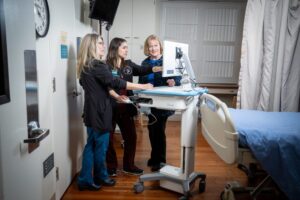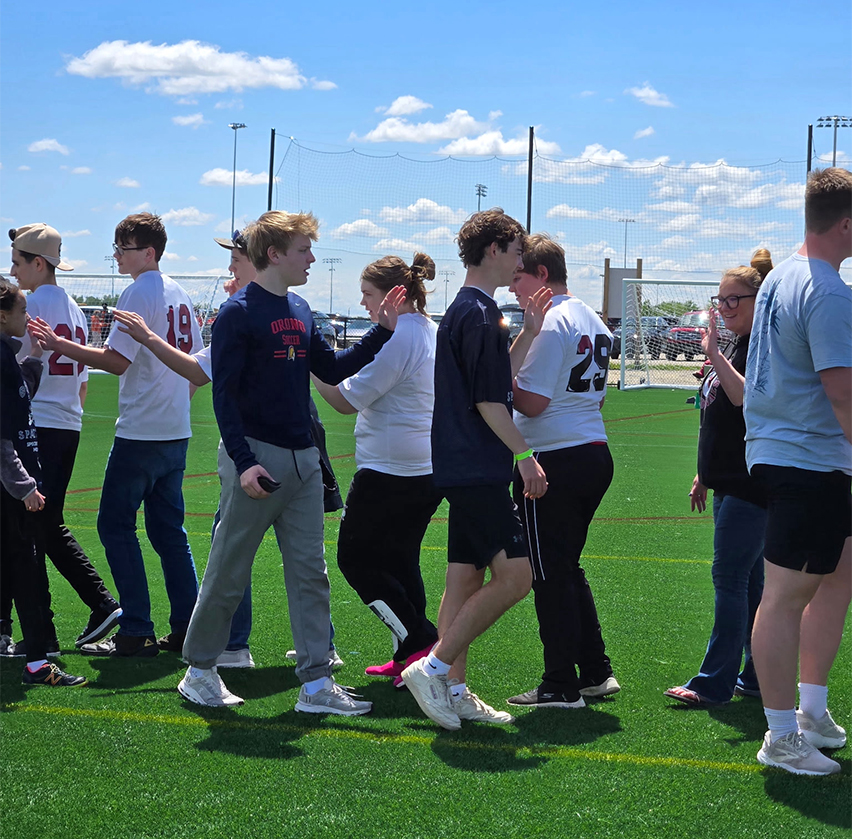Report on the National Institutes of Health Grant for Western University of Health Sciences’ College of Graduate Nursing
Introduction: Advancing Sustainable Development Goals Through Nurse Scientist Training
Western University of Health Sciences’ College of Graduate Nursing (CGN) has been awarded its first grant from the National Institutes of Health (NIH). The funding supports the “Training Community-Engaged Research Teams” (T-CERT) program, a strategic initiative designed to develop nurse scientists and enhance community health. This program directly aligns with several United Nations Sustainable Development Goals (SDGs), particularly SDG 3 (Good Health and Well-being), SDG 4 (Quality Education), and SDG 10 (Reduced Inequalities).
Program Objectives and Alignment with SDGs
The T-CERT program’s long-term goal is to empower nurses to become leaders in community-engaged research, thereby improving health outcomes by addressing foundational health factors. This contributes to the SDGs in the following ways:
- SDG 3: Good Health and Well-being: By training nurse scientists to conduct community-based research, the program aims to improve patient care and health outcomes, strengthening the capacity of the health workforce to address local health challenges.
- SDG 4: Quality Education: The initiative provides specialized, high-quality educational research training for 80 professionals, creating a new generation of nurse scientists. The development of a T-CERT Toolkit ensures this knowledge is accessible for lifelong learning and can be scaled nationally.
- SDG 10: Reduced Inequalities: A core component of the curriculum, led by Associate Professor Lucian O’Connor, focuses on the social determinants of health, equipping researchers to understand and address the root causes of health disparities within communities.
- SDG 17: Partnerships for the Goals: The project is founded on a multi-stakeholder partnership involving academic institutions (WesternU, Claremont Graduate University), a federal funding body (NIH), and community health workers, embodying the collaborative approach essential for achieving sustainable development.
Financial and Administrative Framework
- Funding Body: National Institute of Nursing Research (NINR)
- Grant Amount: $751,639
- Project Duration: Three years
- Principal Investigator: Mary Lopez, PhD, RN, Dean of CGN
- Co-Investigators: Bradley Henson, DDS, PhD, and Lucian O’Connor, PhD
Implementation and Program Structure
The T-CERT program will be implemented through a structured, multi-year plan focused on education, mentorship, and community partnership.
- Cohort Training: The program will train two distinct cohorts. The first will run from July 2026 to July 2027, and the second from July 2027 to July 2028.
- Mentorship and Collaboration: Students will be assigned mentors from a network of established nurse scientists. This collaborative model supports SDG 4 by providing expert guidance.
- Community-Engaged Research: In their first semester, students will identify and engage with a community to assess its specific health needs. This participatory approach is critical for developing solutions that advance SDG 11 (Sustainable Cities and Communities).
- Curriculum and Deliverables: The one-year course culminates in the development of a formal research proposal. A national conference in July 2027 will serve as a key deliverable, disseminating project findings to a wider audience, including the WesternU community and community participants.
Projected Outcomes and Success Indicators
The success of the T-CERT program will be measured by its direct impact on both education and community health, reflecting its commitment to the SDGs.
- Educational Attainment: A primary success metric is the participation of at least 40 students per cohort who complete the program and develop proposals for community-based research, fulfilling objectives related to SDG 4.
- Community Health Improvement: The ultimate goal is for the research projects to be shared and implemented, leading to measurable improvements in the health of the communities served. This outcome directly supports the targets of SDG 3 and SDG 10.
- Knowledge Dissemination: The creation of the T-CERT Toolkit will extend the program’s impact beyond its initial cohorts, providing a valuable resource for institutions nationwide and fostering a broader commitment to community-engaged health research.
Analysis of Sustainable Development Goals (SDGs) in the Article
1. Which SDGs are addressed or connected to the issues highlighted in the article?
-
SDG 3: Good Health and Well-being
The article directly addresses this goal by focusing on a program designed to “improve patient care and health outcomes” and “improve the health of the communities they serve.” The training of nurse-scientists to conduct community-engaged research is fundamentally aimed at ensuring healthy lives and promoting well-being.
-
SDG 4: Quality Education
The core of the article is the T-CERT program, which provides a “direct one-year educational research training experience” to nurse-scientists. This initiative focuses on providing specialized, high-quality tertiary education and professional development, aligning with the goal of ensuring inclusive and equitable quality education and promoting lifelong learning opportunities.
-
SDG 17: Partnerships for the Goals
The project is a collaborative effort involving multiple institutions. The article mentions the partnership between Western University of Health Sciences (WesternU), the National Institute of Nursing Research (which provided the grant), Claremont Graduate University (providing mentors), and Pomona Valley Hospital Medical Center. This multi-stakeholder partnership to achieve a common goal is the essence of SDG 17.
2. What specific targets under those SDGs can be identified based on the article’s content?
-
SDG 3: Good Health and Well-being
- Target 3.c: “Substantially increase health financing and the recruitment, development, training and retention of the health workforce…” The article highlights a grant of “$751,639” which is a form of health financing specifically for the development and training of the health workforce, in this case, 80 nurse-scientists.
-
SDG 4: Quality Education
- Target 4.3: “By 2030, ensure equal access for all women and men to affordable and quality technical, vocational and tertiary education, including university.” The T-CERT program is a form of specialized tertiary education for nursing professionals, providing them with advanced research skills.
- Target 4.4: “By 2030, substantially increase the number of youth and adults who have relevant skills, including technical and vocational skills, for employment, decent jobs and entrepreneurship.” The program directly aims to increase the number of nurses with advanced skills in community-engaged research, making them more effective leaders and scientists in their field.
-
SDG 17: Partnerships for the Goals
- Target 17.17: “Encourage and promote effective public, public-private and civil society partnerships…” The project exemplifies this target through its structure, which is a partnership between a public funding body (National Institute of Nursing Research), a private university (WesternU), another university (Claremont Graduate University), a hospital (Pomona Valley Hospital Medical Center), and civil society (community health workers and neighborhood participants).
3. Are there any indicators mentioned or implied in the article that can be used to measure progress towards the identified targets?
-
Indicators for SDG 3 (Good Health and Well-being)
- Financial Investment: The article explicitly states the funding amount of “$751,639 through the National Institute of Nursing Research,” which serves as a direct indicator of financial resources mobilized for health workforce training (Target 3.c).
- Number of Trained Health Professionals: The program aims to provide training to “80 nurse-scientists over two cohorts,” with a goal of “at least 40 students per cohort.” This is a quantifiable indicator of progress in developing the health workforce (Target 3.c).
- Community Health Impact: An implied indicator is the improvement in community health. The article mentions a success metric would be that the participants “share their projects with us and with the community to improve the health of the communities they serve” and that “neighborhood participants come to the conference and tell us how this project impacted their life.”
-
Indicators for SDG 4 (Quality Education)
- Number of Students in Tertiary Education: The target of training “80 nurse-scientists” is a direct indicator of increasing the number of adults with relevant, specialized skills (Targets 4.3 and 4.4).
- Development of Educational Resources: The creation of a “T-CERT Toolkit to increase the reach and impact of this program throughout the nation” is a tangible output and indicator of developing and disseminating educational materials.
- Completion of Research Proposals: A measure of the program’s educational success is that students “write proposals for community based research,” indicating they have acquired the necessary skills.
-
Indicators for SDG 17 (Partnerships for the Goals)
- Number and Type of Partners: The article identifies a multi-stakeholder partnership involving a government institute, universities, a hospital, and community members, which serves as a qualitative indicator of a functional partnership (Target 17.17).
- Mobilized Financial Resources: The grant of “$751,639” is a quantitative indicator of the financial resources mobilized through the partnership.
4. Summary Table of SDGs, Targets, and Indicators
| SDGs | Targets | Indicators Identified in the Article |
|---|---|---|
| SDG 3: Good Health and Well-being | 3.c: Substantially increase health financing and the recruitment, development, training and retention of the health workforce. |
|
| SDG 4: Quality Education |
4.3: Ensure equal access for all to affordable and quality technical, vocational and tertiary education.
4.4: Substantially increase the number of adults who have relevant skills for employment. |
|
| SDG 17: Partnerships for the Goals | 17.17: Encourage and promote effective public, public-private and civil society partnerships. |
|
Source: news.westernu.edu







